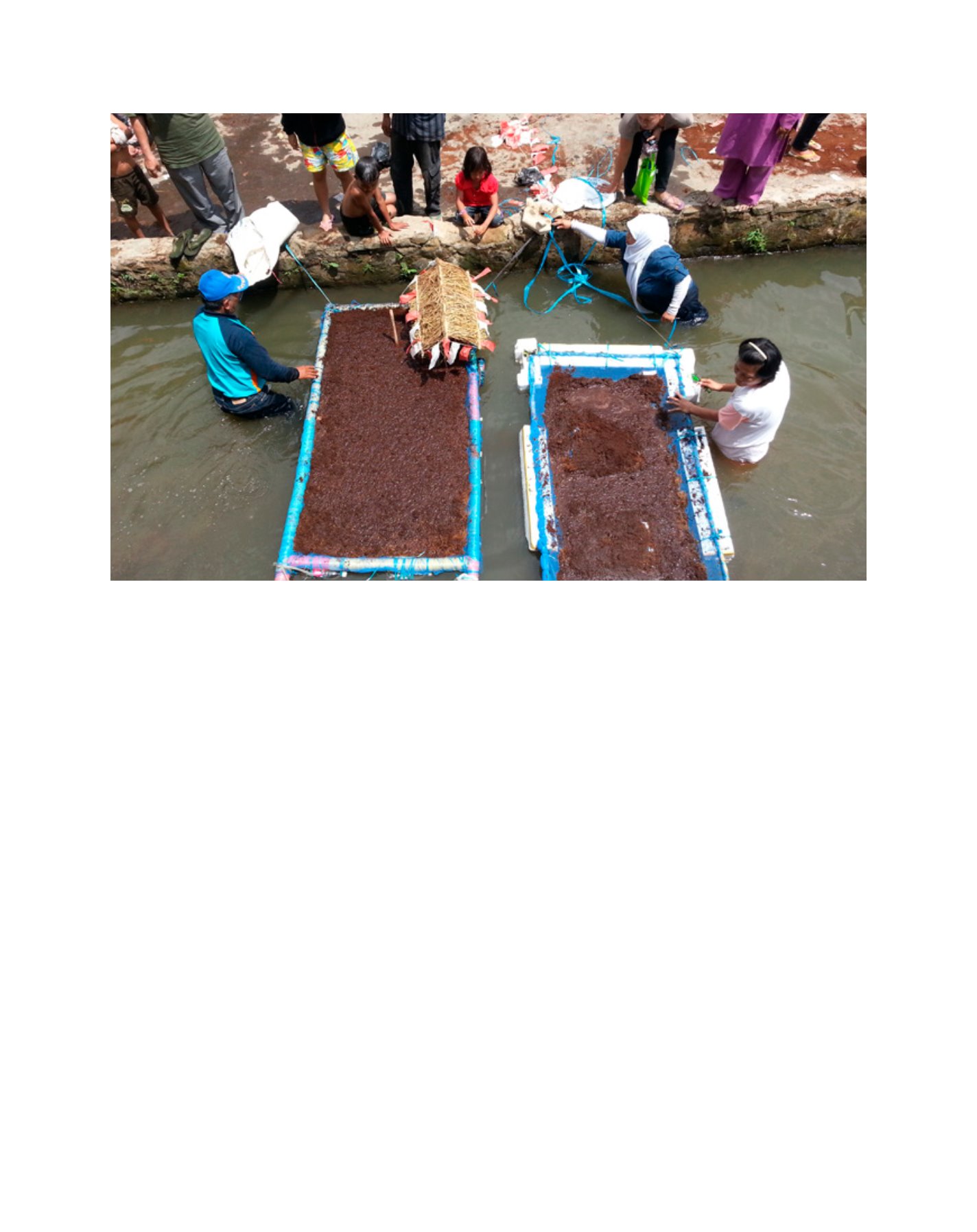

[
] 101
access
to
water
and
sanitation
for
all
river a health hazard to the community. However, despite
its quality, the river has still been used as a water source
for daily use, with local communities using it for washing
clothes. The river is also used as a water source for a public
toilet. The objectives for the Kampung Tanggulan project
were therefore:
•
River restoration
: by introducing community-based ecohy-
drology intervention for setting up ecosystem services.
•
Development of innovative models and applying those
to a pilot scheme
: by building a demonstration site (with
site selection criteria and rationale) for stream restora-
tion, using bio-eco engineering technology with expected
outcomes. The key components of the model to be devel-
oped were: technology, policy measures, capacity building
and stakeholder participation.
•
Ensuring sustainability
: through public participation and
a community empowerment programme, to involve the
community as much as possible in the project.
Design and implementation
The pilot plan in Kampung Tanggulan included 128 resi-
dential units together with public facilities such as a toilet,
care unit, and mosque, all sited on approximately 10,000m
2
of land. The domestic wastewater, especially greywater,
had been flowing into the river without treatment. The
project aimed to restore river water quality by improving
the management of wastewater, collecting it into a system of
pipelines and feeding it to the treatment plant.
Communal wastewater management is defined as the
collection and treatment of wastewater by using a simple and
cost-effective technology that is sufficient for protecting the
environment. A proper wastewater management programme
is designed to protect public health and the environment,
with high density and low-economic residences prioritised.
Those areas have been mostly served by traditional gravity
sewers, force mains, and simple treatment systems.
Kampung Tanggulan is a residential area with a high popu-
lation density of middle- to low-income households. It was
decided that wastewater management in this area should
comprise a simplified community sewerage treatment system.
The community plays an important role, as it is expected that
it will manage all operations and maintenance of the system
after installation. It was therefore important that the treat-
ment technology was chosen for its ease of operation.
To minimise loads, the system is designed to separate
wastewater from storm water and supply it to a treatment
plant to be built near the river. The process has three steps:
•
Sedimentation
: the suspended particles are separated
in the sedimentation tank which is designed to prevent
particles from interfering with treatment processes in the
biofilter. An oil and grease trap is also installed.
•
Biological process
: the wastewater flows continuously
through the biofilter where it is treated by microorgan-
isms that grow attached to the filter.
• Treated wastewater then flows through the constructed
wetland system. This technology provides a good alternative
to conventional onsite wastewater disposal systems which
usually consist of a biofilter and a soil absorption field.
The type of constructed wetland chosen for the project was a
Floating Treatment Wetland (FTW). FTWs employing emer-
Construction of Floating Treatment Wetlands by the local community
Image: IoT
















